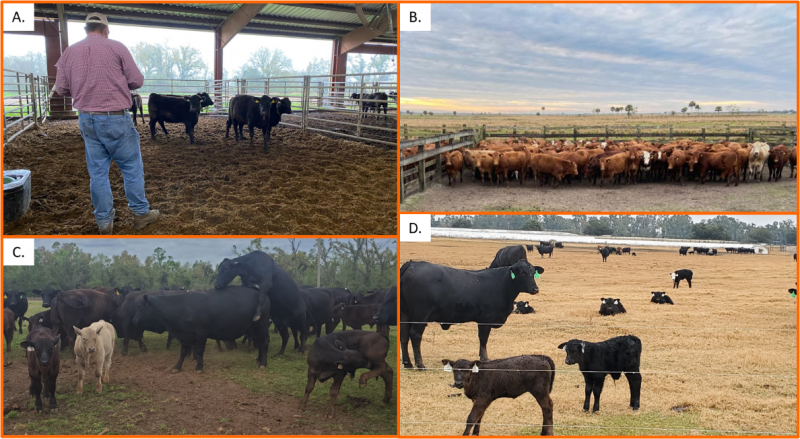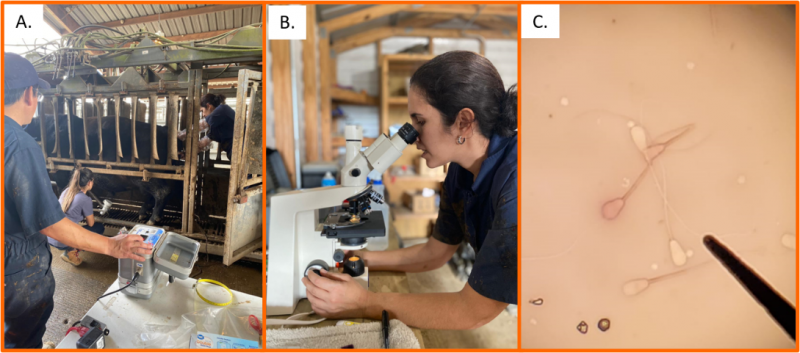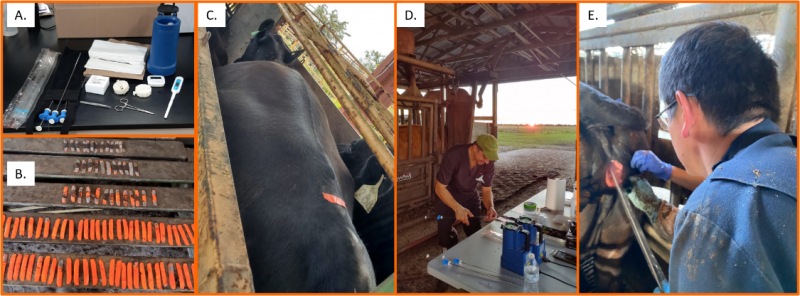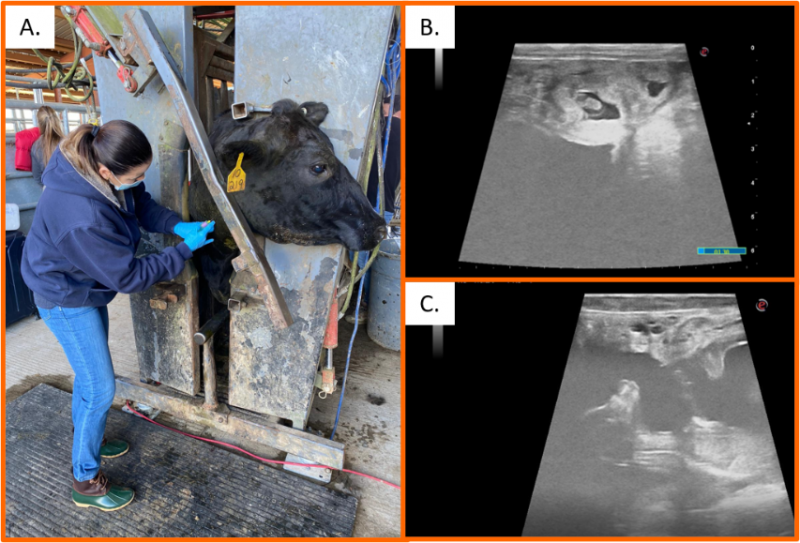Angela M. Gonella Diaza, DVM, Ph.D. (NFREC, IFAS, UF); Mario Binelli, Ph.D. (Animal Sciences, IFAS, UF); João H. J. Bittar, DVM, Ph.D. (Large Animal Clinical Sciences, College of Veterinary Medicine, UF); Alejandro Ojeda, DVM, Ph.D. (University of São Paulo, Brazil)
Over the last 100 years, many reproductive technologies were developed as the results of public and private research efforts. Some producers adopted these technologies on their operations and have experienced the significant advantages they can provided to herd productivity. However, more progress still can be made towards promoting the adoption of available reproductive technologies, especially in Cow-Calf operations. In May 2020, USDA’s National Animal Health Monitoring System (NAHMS) released Beef 2017: Beef Cow-calf Management Practices in the United States. This article will summarize some significant results of this study, and also explain, the advantages of adopting these technologies on Cow-Calf operations.
–
Breeding Season
One of the oldest and most basic technologies used by beef producers is to establish a “defined or controlled breeding season.” This means that the breeding of all females of reproductive age (cows and heifers) is conducted within a short period (usually 60 to 90 days), instead of year-round. Having a defined breeding season facilitates management of the ranch, because activities such as weaning, vaccinations, castration, and dehorning may be conducted in a narrow predetermined time-frame, instead of throughout the year. Benefits of having a defined calving season also include weaning older/heavier calves which are less stress-prone for feedlots, increasing the efficiency of re-breeding, and taking advantage of more favorable markets. Additionally, a defined breeding season allows quick identification and sale of open females to improve efficiency, reduce costs from unproductive animals, and possibly decrease the stocking rate. This adjustment in the stocking rate will help to cut feeding and pasture management costs. According to the USDA’s report, 31.7% of the operations have one breeding season, 9.6% have two, and 58.7% have none. Despite being a practice that requires more planning than economic investment, only 1 in 3 producers in the US uses a controlled breeding season.

Figure 1: Having a defined or controlled breeding season will facilitate ranch activities. A. NFREC’s Beef Unit Manager, David Thomas, chooses the replacement heifers 30 days before the breeding season starts. B. A group of synchronized heifers at Rollins Ranches (Vero Beach and Okeechobee, FL). We used a Timed-Natural Breeding protocol, followed by natural mating for 90 days. C. A group of mature crossbred cows is synchronized and waiting to be inseminated at the NFREC (Marianna, FL). D. This picture shows a group of our cows during the calving season. 60% of these cows calved in a 21-days window (UF-NFREC; Marianna, FL).
–
Bull Evaluation
During the breeding soundness exam, a veterinarian examines bull semen under a microscope. Considering that every bull is responsible for breeding 15 to 50 females, the bulls’ fertility has a tremendous impact on the reproductive efficiency of the herd. Before the breeding season starts, it is crucial to know if every bull is ready to perform this significant task. As reported by Beef 2017, only 19.7 % of US operations conducted semen checks. This is a troublesome value, if we consider that according to various studies, around 20% of bulls are subfertile, based on physical issues or poor sperm quality.

Figure 2: Breeding soundness exam and semen evaluation of the bull. A. Semen samples are collected by electroejaculation. B. Semen is checked under the microscope to evaluate the number, motility, and morphology of sperm cells. C. Several sperms cells with normal morphology are shown; however, the pink stained sperm cell (Eosin stained. Black arrow) is dead and should be considered abnormal.
–
Estrus Synchronization and Artificial Insemination
Beef 2017 indicates that in the US, only 7.3% of the operations use estrus synchronization, and 11.6% artificial insemination. Estrus synchronization consists of the hormonal manipulation of the females’ reproductive cycle to make the entire group come into heat and ovulate around the same time. Also, external hormones, especially progesterone, are beneficial for females in anestrus (not cycling yet) to help them resume ovarian activity. Cows and heifers can be synchronized to be bred by a bull (Bull-Synch or Natural mating programs) or bred by artificial insemination (AI combined with heat detection, Timed AI, or Split AI programs). One of the results of using estrus synchronization is the concentration of pregnancies and calving in short periods. This characteristic can help operations with no set breeding season, which are planning to transition to a short breeding period. Artificial insemination is a technology that allows the delivery of sperm cells to the uterus of the cow without the presence of a bull. This technology allows the use of semen from sires with exceptionally high genetic merit. This can allow for dramatic genetic improvement of the herd.

Figure 3: A. Materials that are required for artificial insemination. B and C. Heat detection patches (Estrotect) after a successful estrus synchronization program. D and E. Artificial insemination procedure.
–
Pregnancy Diagnosis
Pregnancy diagnosis can be conducted by rectal palpation, ultrasonography, or blood test. For the Beef 2017 study, in the US, the proportion of operations adopting each of these methodologies was 19.3%, 38.8%, and 3.3%, respectively. But why should producers identify pregnant and open cows? The answer is simple: they may want to cull the open cow, which did not get pregnant after repeated breeding attempts. Also, in regards to the bred cows, it is important to know when they got pregnant. It has been proven that cows that re-breed earlier are the ones with greater reproductive efficiency that provide more profit for producers.

Figure 4: Several methodologies can be used to conduct pregnancy diagnosis in cattle. A. Blood sample collection to evaluate pregnancy markers that could be detected in blood starting on day 25 of gestation. Transrectal ultrasound could also be employed for pregnancy determination. In the figure above, pictures of 30 (B) and 60 (C) days bovine gestations are presented.
–
These statistics were not meant to call out any single herd or producer. As an industry, we need to maintain economic sustainability, if we want to continue to play a large role in feeding the growing global population. It is up to all of us to take the steps necessary to help ensure we can. Adopting the reproductive technologies that are already widely available will help get cows bred, wean heavier and healthier calves, and help keep our industry profitable. Remember, reproductive technologies are not exclusively for large herds. Small producers can also take advantage of reproductive technologies too.
If you are interested in implementing any new reproductive technologies on your operation and need some guidance, don’t hesitate to contact UF/IFAS Extension. We are here to help you.
- Heat Stress and its Impact on Cattle Reproduction - March 14, 2025
- Fall is Here.Time for Pregnancy Testing Cattle! - September 13, 2024
- How Stress Impacts Cattle Reproduction - March 15, 2024
